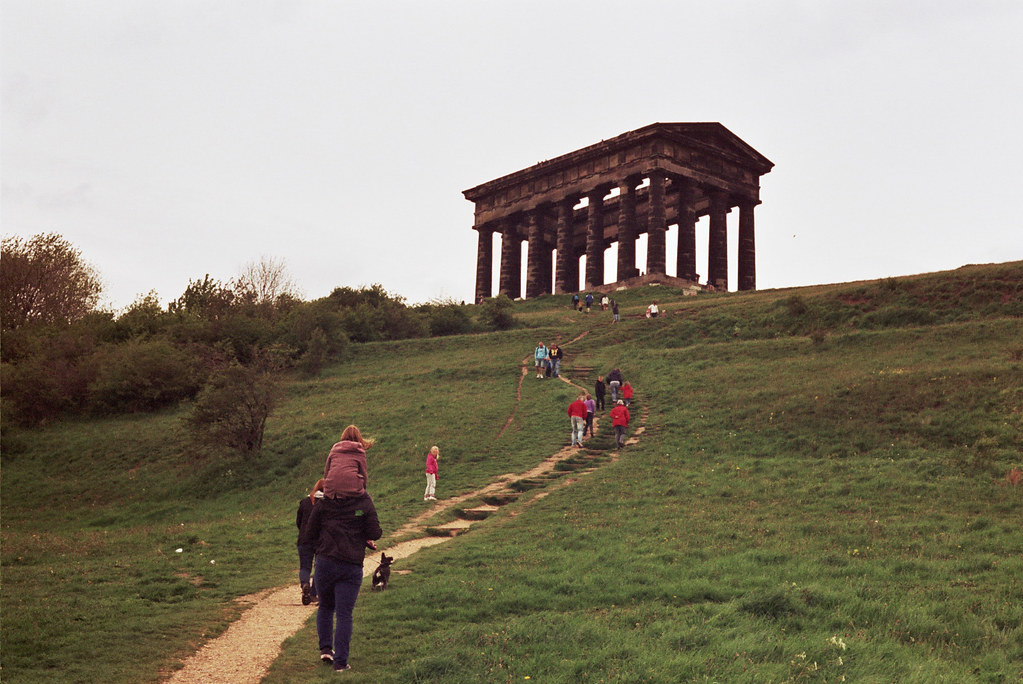I ponder the intricacies of maps, just staring at various corners of the world for no particular reason. I think that’s fairly typical for much of the 12MC crowd although maybe not completely understood by the public at large. That’s their loss. How else would I find an odd conglomeration of LE towns in the County of Tyne and Wear and County Durham in northeast England?
These are place names with “le” inserted within them, offset by hyphens. It’s probably easier to demonstrate the phenomenon by showing the instances I first encountered in Tyne and Wear.
Thank the Romans
I spotted Hetton-le-Hole and then a moment later, Houghton-le-Spring. How did this happen? It couldn’t be coincidental, could it? I would expect “le” to be used in the manner of what appeared to be a grammatical article in France but it seemed out of place in England. I discovered that it has ancient roots as I researched further, an artifact of Roman times that means “on the” or “in the.” Somehow it survived through the ages within a small geographic corner of England. Thus my reflexive consideration of French wasn’t too far off base since it’s a romance language.
I don’t know if the usage extends to other areas of England or beyond (I didn’t check) but there was a definite cluster within the general vicinity of Newcastle Upon Tyne and Sunderland.
Hetton-le-Hole

Hetton-le-Hole, according to the Hetton Town Council, “derives from two Anglo-Saxon words, which were spelt together ‘Heppedune’ or Bramble Hill.” it was eventually “divided into two parts known as Hetton-on-the-Hill and Hetton-in-the-Hole the second and more sheltered part was that in which the village ultimately arose.”
Houghton-le-Spring

A mile further north, Houghton-le-Spring also arose, tracing to a settlement from the Norman period. The Houghton Heritage Society noted:
“Houghton-le-Spring takes its name from the Anglo-Saxon “Hogh” which means a point of land projected into a plain, and the Old English word “tun” which means settlement. Therefore, Houghton can translate to: ‘homestead or settlement on the spur of a hill’ which is rather apt when one approaches the town from Houghton Cut.”
The Spring appendage is shrouded in history. The Le Spring family served as 14th Century Lords of Houghton so that seemed to be a handy explanation. Others point to evidence that the name derives from a nearby geographic feature; an area of natural springs with waters believed to possess medicinal properties.
I’m sure Houghton-le-Spring has many redeeming features. Those of primary interest to geo-oddity enthusiasts such as myself would include the unusual roundabouts with A690 slipping above and below them. I also spotted an automobile accident [image no longer available] that’s visible in current satellite image. Thankfully it appears to be a minor incident.
Virtual Road Trip to Several “le” Locations
Let’s put that image aside and go on a little road trip.
It’s entirely feasible to visit five different LE towns with minimal driving, 40 miles (64 kilometres) in about an hour and a half. I’ll add that to my list of possibilities should I find myself in northeast England during my future travels. This is also a great opportunity for anyone from the UK portion of audience to be the first to complete the journey and experience an unusual clustering.
A third location exists in Tyne and Wear. Chester-le-Street has perhaps the most noteworthy pedigree of the entire bunch. The Chester-le-Street Heritage Group explains that this was once the sight of a Roman fort. It evolved into an important religious center that housed the remains of St. Cuthbert. It was here that a bible was first translated into Old English.
However, its location left Chester-le-Street vulnerable to Danish raiders. The remains of St. Cuthbert were relocated to Durham in 995 for safety. Thus, Durham rose in prominence while Chester-le-Street faded. I couldn’t find an exact reason why “le-Street” was appended to Chester. There’s the obvious option, Chester on the Street, however I don’t know if the appendage had the same meaning originally as it has today.
Witton-le-Wear is located in County Durham. Witton seems to derive from a couple of Anglo-Saxon words meaning a farm near a woodland. The “Wear” portion refers to the River Wear. That provided a rather descriptive explanation: a farm near a woodland along the River Wear.
Finally, once again in County Durham, comes Dalton-le-Dale. Dale is a familiar term in modern English for a valley, tracing back to old English prior to the Tenth Century. Dalton-le-Dale makes sense.
Are there others?

Leave a Reply